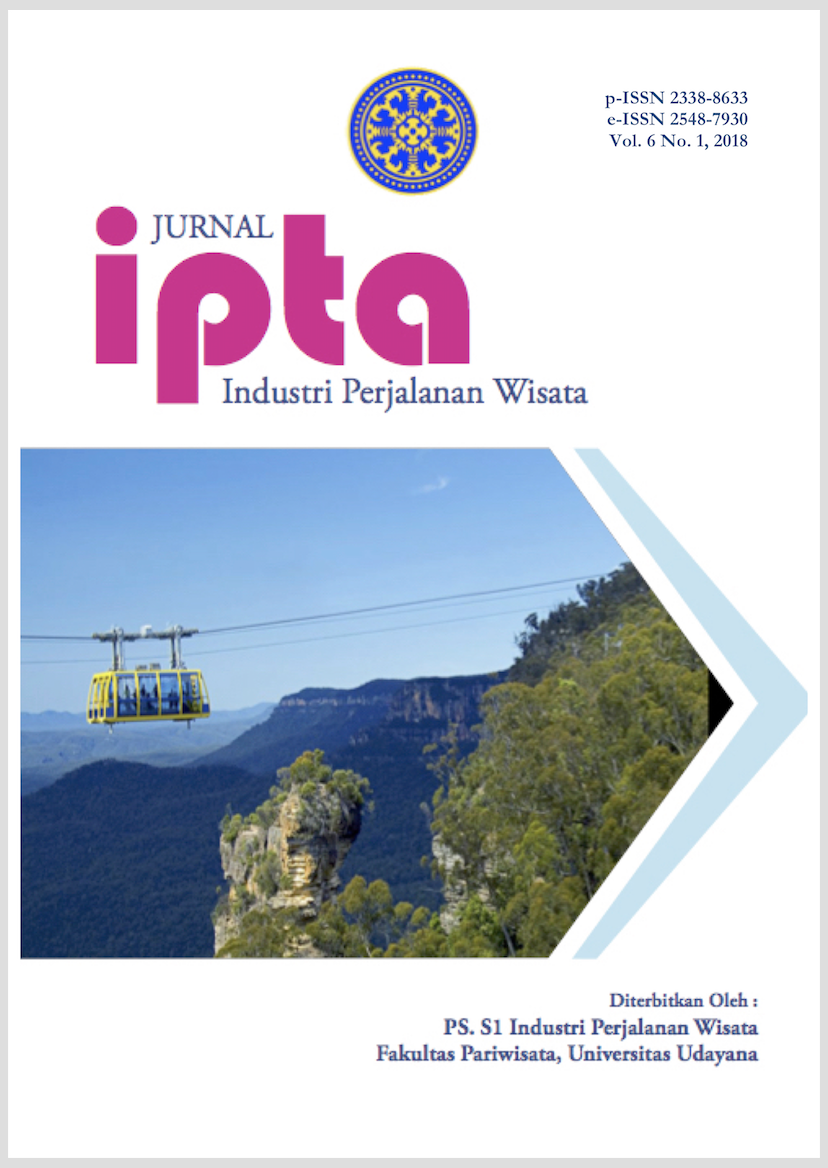DEVELOPMENT STRATEGIES OF UBUD VILLAGE AS A CULTURAL M.I.C.E. (MEETING, INCENTIVES, CONVENTIONS, EXHIBITIONS) DESTINATION IN BALI
Abstract
The concept of mass tourism has two seasons namely high season and low season to determine the number of tourist visits each year, therefore the tourism industry to try to conduct a vigorous promotion by carrying out activities that can bring tourists to stay in one tourist destination. One of the activities that entrepreneurs do in the low season is to conduct activities M.I.C.E. (Meetings, Incentives, Conventions and Exhibitions). This research uses descriptive qualitative analysis technique by applying the participatory principle involving M.I.C.E stakeholders, destination manager, travel agent managers and tourists. Ubud Village as a tourist destination also has potential for M.I.C.E activities has not had a convention bureau, this is due to the characteristics of the tourists who come to Ubud and the needs required by the tourism industry managers are different from other tourist destinations in Bali such as Badung regency and Denpasar municipality. During this time, the implementation activities of M.I.C.E. dominated by incentives tourism activities (56.57%), exhibitions (31.72%) and meetings (11.71%). The SWOT results concluded that Ubud Village is still S> W and O?T thus requiring internal consolidation, but seeing O?T has potential for further development. Development strategy were using grand strategy which make the results such as growth, dominance, and maximum investment.
Downloads
References
Kotler, P. 2002. Manajemen Pemasaran. Jilid I Edisi Bahasa Indonesia. Jakarta: Pearson Education Asia Ptc. Ltd. dan PT Prenhallindo.
Kotler, P. Bowen, J. Makens. 2002. Pemasaran Perhotelan dan Kepariwisataan. Edisi Bahasa Indonesia, edisi kedua. Jakarta: Pearson Education Asia Pte. Ltd. dan PT Prenhallindo.
Sucherly. 2003. Strategi Pemasaran Jasa dalam Meningkatkan Keunggulan Bersaing. Dalam Strategi Baru Manajemen Pemasaran. Editor Usmara, A. Jogjakarta: Amara Book.
http://venuemagz.com/September-2012/seminar- wisata-spiritual-go-to-bali-before-i- die.html diunggah pada tanggal 24 November 2015.
http://travel.kompas.com/read/2012/01/06/16000175/ Wisata.Spiritual.di.Bali.Belum. Digarap.Maksimal. Diunggah tanggal 24 Nopember
________.2008, Buku Direktori Usaha Pariwisata Desa Ubud Tahun 2008, Dinas Pariwisata, Desa Ubud, Ubud.
________. 2006 , Buku I, II dan III Cetak Biru Pemasaran Pariwisata Nasional, Departemen, Pariwisata, Jakarta.





